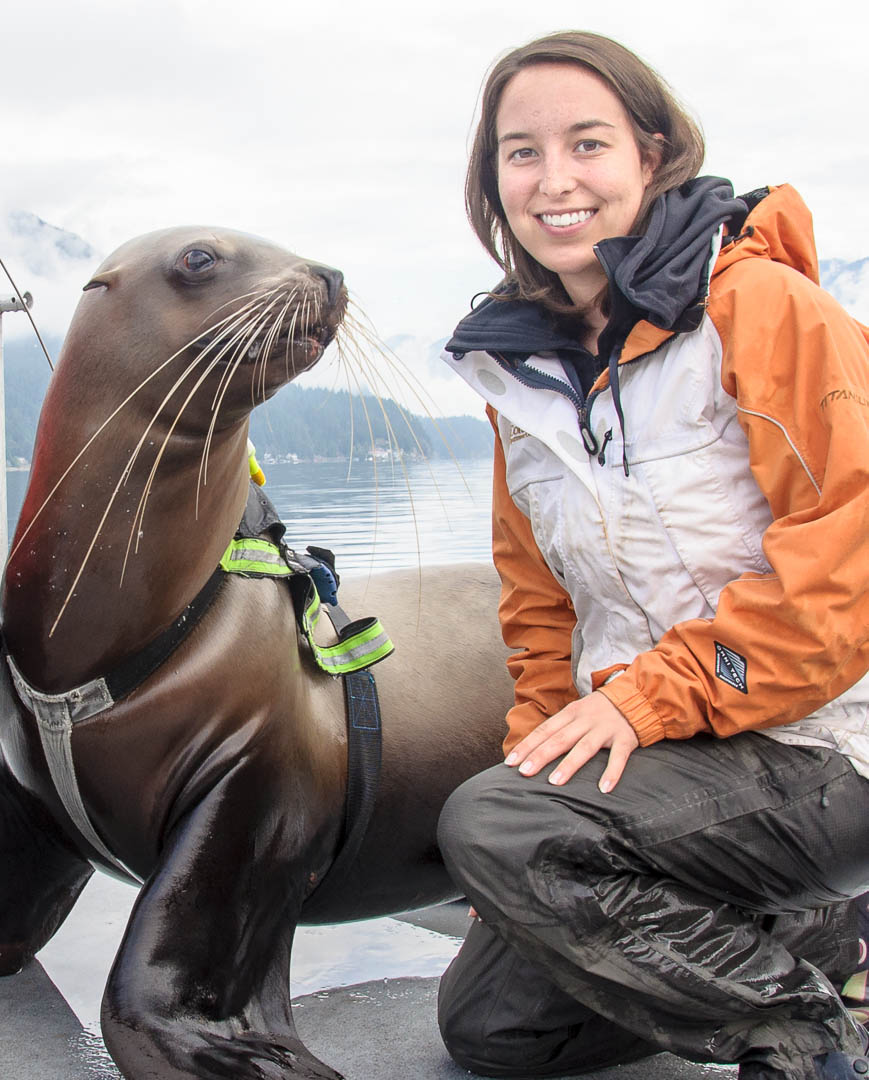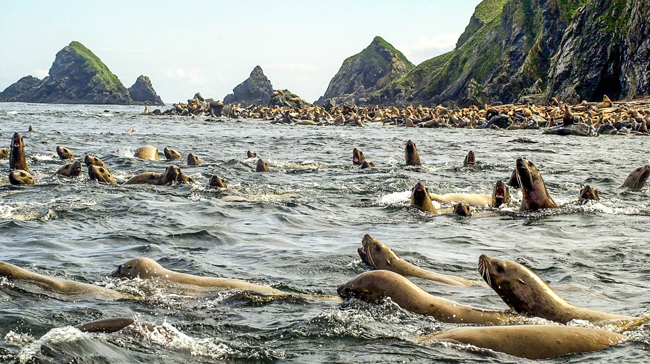
Does nutritional status influence diving behavior in Steller sea lions?
If you have ever searched for a gas station while your fuel gauge light is on, you might appreciate the daily dilemma of a Steller sea lion that is nutritionally stressed. Before you can fill up your tank, you must use up some of your remaining fuel to find a gas station—but you risk running out of fuel before you get there.

Female Steller sea lions with dependent pups or juveniles must find adequate prey to produce the energy rich milk needed to sustain their young.
Many people believe that Steller sea lions in the western Aleutian Islands are nutritionally stressed because of a shortage of Atka mackerel—and are effectively driving on empty fuel tanks. Their survival depends on finding enough healthy food to provide energy for metabolism and reproduction. But diving for food requires energy, and a sea lion must balance the energy expended while foraging with the energy gained from the food it captures.

Boni was one of 4 female Steller sea lions that participated in the open water diving trials conducted by Carling Gerlinsky.
This scenario—should it be what is actually happening in the western Aleutian Islands—poses important questions for scientists. Does an undernourished sea lion dive as efficiently as a healthy sea lion? Does nutritional status change diving behavior? These questions are at the heart of a new Consortium study led by Carling Gerlinsky and recently published in The Journal of Experimental Biology.
Measuring Diving Efficiency
“Last year, we published a study that indirectly measured the maximum amount of time a Steller sea lion can stay underwater before it uses up the oxygen in a single breath,” Gerlinsky says. “The calculated Aerobic Dive Limit gives us a measure of the diving efficiency of an average sea lion.”
In her recent follow-up study, Gerlinsky wanted to know whether weight loss affected the aerobic dive limit and overall diving behavior. She worked with the same four adult female Steller sea lions that participated in her previous study, but this time the animals had lost ten percent of their body mass under a supervised diet—simulating a widespread nutritional stress speculated to have occurred in wild populations.
Surprisingly, Gerlinsky and her colleagues found that the aerobic dive limit increased from 3.0 minutes in unstressed animals to 3.3 minutes in nutritionally stressed animals, meaning nutritionally stressed sea lions could forage for slightly longer on the oxygen in a single breath.
Limits to Foraging
“We found that nutritionally stressed animals didn’t seem to have a compromised ability to dive and forage,” Gerlinsky notes. “If anything, they had capacity to dive longer and deeper due to an increased aerobic dive limit, but they needed to spend more time on the surface to recover between dives.”

Each sea lion traveled aboard the Steller Shuttle to Indian Arm (the southernmost fjord in North America) where they swam and dove freely below the platform, and surfaced within the metabolic dome within the center of it. Air expelled by the sea lions was sampled through the blue tube by the oxygen and CO2 analyzers aboard the research vessel Steller Pilot to determine the energetic cost of each dive.
On the flipside, Gerlinsky says, “nutritionally stressed animals require a lot more food to regain the weight they have lost, so they forage less efficiently because their metabolic rate hasn’t changed. They still need the same amount of food as they always did, but they’re operating from an energy deficit. However, they seem to have capacity to dive longer and potentially obtain more food while foraging.”
There is a limit to how much time a sea lion can spend foraging, Gerlinsky notes. Longer foraging trips cost more energy and reduce the amount of time that females could otherwise spend feeding their young. More time at sea also increases the risk of predation.
While the long-term consequences of “running on empty” are unclear, establishing the aerobic dive limit for Steller sea lions is proving to be a useful baseline measurement for health. Carling Gerlinksy’s ongoing efforts are helping to refine its usefulness in understanding the real-life challenges faced by the declining Steller sea lions in Alaska’s western Aleutian Islands.
 PUBLICATION
PUBLICATION
|

|

 |
||||||||||||
